
6 minute read
EXOTICS NEWS
The latest from the world of exotic animals
Avian Flu Hits Zoo
Advertisement
At the very end of August a case of avian flu was confirmed in a pelican at Paignton Zoo, shortly followed by another case in a free-range Indian peafowl. This tragic situation caused the immediate closure of the zoo to all visitors, and with the likelihood of more cases to come, all the birds from the lake area and all the peafowl were caught up and put into biosecure quarantine facilities whilst tests continue.
Monkey Valley Opens

The new Monkey Valley at ZSL London Zoo. Monkey Valley opened to the public on the 15th August. The Grade II listed former aviary is now enjoying a new lease of life where the troop of ten Kikuyu colobus monkeys have more than 800 metres of rope to swing on, in addition to platforms at various heights, 1,347 new plants and trees to leap amongst and a 30ft waterfall to enjoy. The project cost just over £7 million pound and it took 35,000 hours to complete - 37 of the original cables had to be replaced in the renovated structure.
A Big Birth Took Place
On Monday 22nd August, at around 7 am an Asian elephant calf was born to mum “Donna”, surrounded by the rest of the females in the herd, including her own mum “Kaylee” – who provided reassurance and support with gentle trunk nudges and murmurs to 13-yearold Donna as she delivered her calf. The birth was captured on hidden cameras in Whipsnade’s Centre for Elephant Care, footage shows the calf being encouraged onto her feet by her mum and grandmother soon after being born and taking her first wobbly steps. Identified as female by keepers, the new arrival is an important addition to the European breeding programme for the species – which in the wild are threatened by illegal wildlife trade, habitat fragmentation and climate change.
Whipsnade Zoo’s deputy team leader of elephants, Mark Howes said: “To say we’re delighted by the arrival of this calf is just a huge understatement – it’s a massive success for Donna, for the herd at Whipsnade Zoo, and for elephant conservation full stop. This little infant is a really important addition to the Europeanwide endangered species breeding programme for Asian elephants.
“We were able to watch the birth via our hidden cameras, and it was amazing to see grandmother Kaylee step in to show Donna how to break the amniotic sac that the baby was born in and move the rest of the herd out of the way to allow the little one to stand up for the first time.
“The third in a matriarchal family line here at ZSL Whipsnade Zoo, she’ll grow up being nurtured and learning from her mum Donna and grandmother Kaylee, as well as her ‘aunts’ and ‘cousins’ in the herd – and we’re so excited to see her personality develop as she grows.” Howes added: “Here at ZSL, the conservation charity which runs Whipsnade Zoo, we’re one of the few conservation organisations working around the world to protect all three species of elephants – Asian elephants, African elephants and African forest elephants. Our herd play an active role in our conservation work, from helping us to develop new technologies to educating our visitors - every visit to see our elephants really is an act of support for their conservation.”
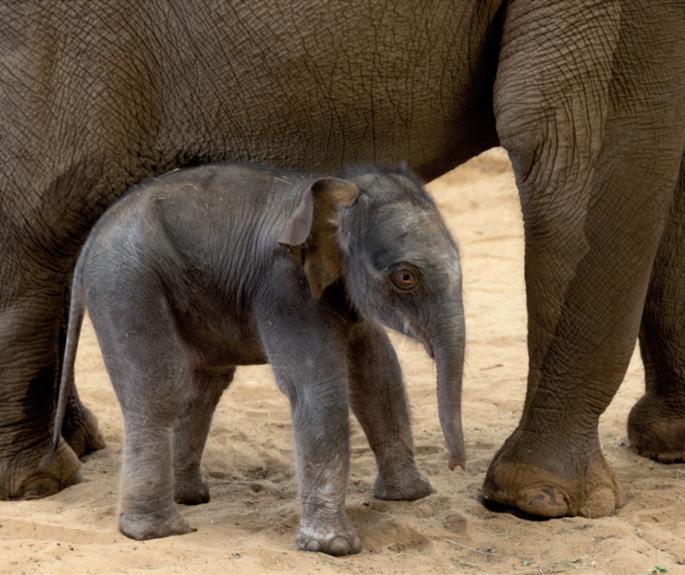
New Roo
At Belfast Zoo a Goodfellow`s tree kangaroo, born in January, has now emerged from mother “Jaya`s” pouch - sired by male “Hasu Hasu”, this is the seventh joey to be born at the zoo. Zoo Curator Andrew Hope explained, “Belfast Zoo was the first zoo in the UK and Ireland to breed the endangered Goodfellow’s tree kangaroo. There are approximately 50 zoos across Australia, USA, Europe, and Asia caring for tree kangaroos and supporting tree kangaroo conservation efforts."
Elsewhere in the zoo a male Rothschild`s giraffe named “Ballyhenry” has been born to female “Casey”.
Rare Kittens Born
Two Pallas`s cats were born at Cotswolds Wildlife Park to parents “Tull” and “Penelope” – they are the first to be born at the park.
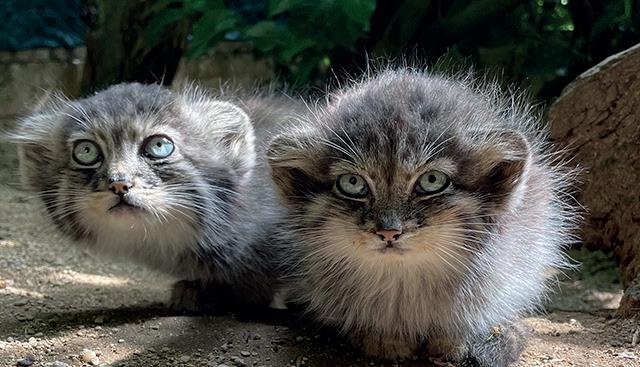
Stanley Arrives
At Chester Zoo a male Rothschild`s giraffe, named “Stanley”- after Mount Stanley in Uganda, has been born to 14 year-old female “Orla”. Another new arrival is a male Sumatran tiger named “Dash” who arrived from Fota Wildlife Park in Ireland.
Crocodiles of the World
Four more Galapagos giant tortoises have hatched at the zoo, bringing the total to six.
Agamas Hatch
At Marwell Zoo five starred agamas or painted dragons have hatched. The juveniles have now joined their parents in the Aridlands House.
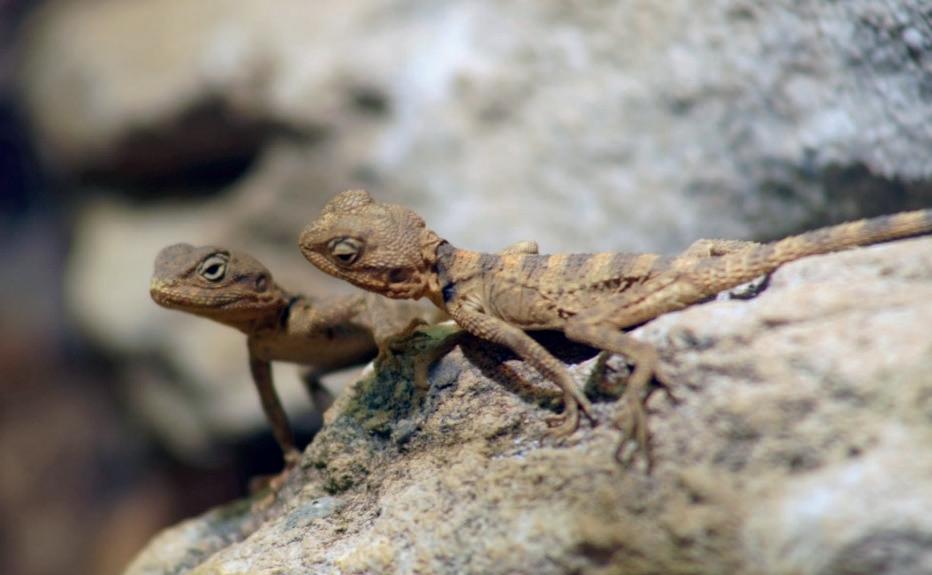
Dan Garrick, Lead keeper for Herptiles, said: “We suspect the female laid the eggs around mid-April. She was showing signs of being gravid (carrying eggs) and looking to nest somewhere. “The juveniles are predominantly insectivorous. At Marwell they are being fed pea aphids, fruit flies, tropical woodlice, small crickets and similar. The adults are omnivorous, they eat flowers, leaves, fruit, and insects. As the juveniles grow, they will start to eat different foodstuffs also.” Starred agamas are listed as being of Least Concern on the IUCN red list, but populations in Egypt have recently been declining.
Rare 500,000-year-old elephant tusk uncovered in Israel
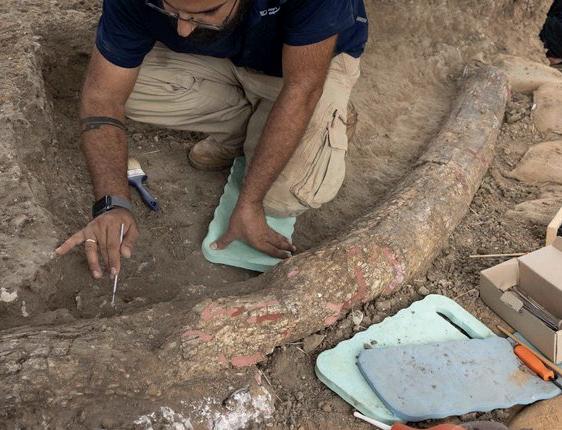
Israeli archaeologists have displayed a rare tusk half a million years old, from an enormous now-extinct elephant, which scholars see as testament to a social ritual by prehistoric humans. The 2.6-metre tusk, weighing approximately 150 kilos, was discovered by biologist Eitan Mor at an excavation site near Revadim, a village in southern Israel. The excavation was managed by the Israel Antiquities Authority (IAA), which said the fossil tusk was the largest to be found in the Near East. Avi Levy, director of the excavation, said it was "fantastic" to find the "extremely preserved tusk". "The elephant is a straighttusked elephant, which became extinct from our area around 400,000 years ago," he said. Judging by the size of its tusk, the elephant would have stood up to five metres tall, significantly larger than today's African elephants.
"Next to the tusk were flint tools prehistoric man used to chop and skin the animals in the region, apparently the elephants too." But the identity of the prehistoric humans who inhabited the region - a land-bridge from Africa to Asia and Europe - was "a mystery" said Mr Levy. "Groups of hunter-gatherers in certain times would arrive at gathering places, in which they would trade women and information and reaffirm social ties that had weakened over the year and go on a hunt of an elephant, something symbolic," he said. And while the tusks could have been a key symbol, they would not necessarily move with the nomadic peoples, if only because of their bulk and weight. "They might have developed some sort of ritual around these tusks and at a certain time, they had to move, the families had to roam to find new living spaces," he said.
Following the excavations, which were carried out with academics from Tel Aviv and Ben-Gurion University of the Negev, the tusk will be transferred to an IAA facility for further research.
Knepp Estate, plus the first successful wild breeding from another site, with one chick fledging at a partner site in East Sussex. The aim of the project is to have 50 pairs of White Storks breeding in south-east England by 2030.
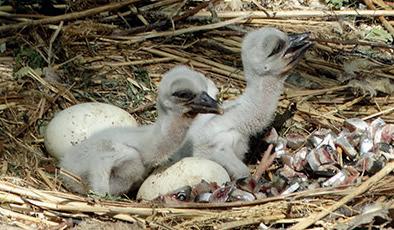
Latest White Stork Release
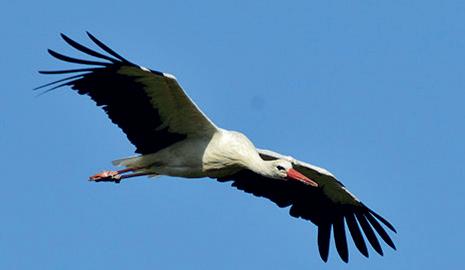
As part of the rewilding “White Stork Project” a batch of 37 young European white storks - 33 of which were bred at the Cotswolds Wildlife Park, and four that were bred at Wildwood in Kent, have been released on the Knepp Estate in West Sussex, the home of the project. Seven of the birds were fitted with GPS tags to help monitor their progress. The project has enjoyed its most successful year to date, with 19 young fledging from eight nests on the
Scientists Plan to Recreate the Extinct Thylacine
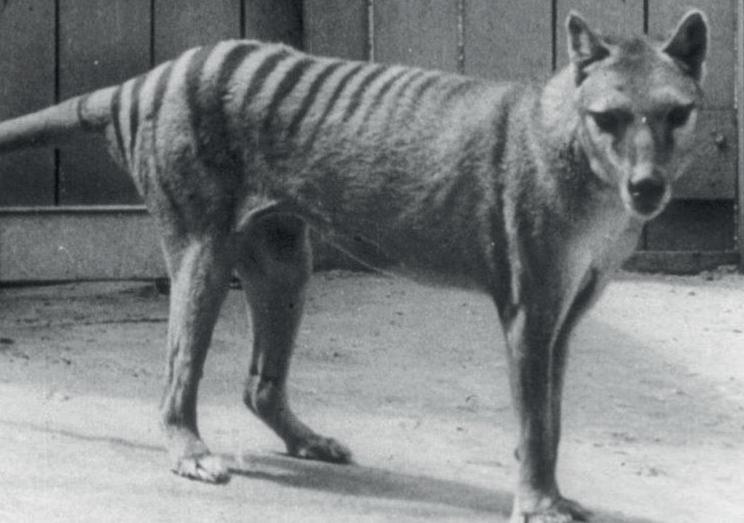
A Dallas-based biotech firm and Melbourne University plan to recreate the extinct Thylacine or Tasmanian tiger. Colossal Biosciences, in cooperation with the university, hope to use a combination of living, genetically similar, marsupials, stem cell technology and gene-editing technology to recreate an embryo and implant it in a surrogate species such as a dunnart. The multi-million pound project aims to bring the formerly extinct thylacine back to life within around ten years, almost 100 years after it was wiped out. The last captive thylacine died in Hobart Zoo in 1936, and the species was officially declared extinct in the 1980s, after no authenticated sightings in the wild had occurred, despite many claimed sightings in recent years.










